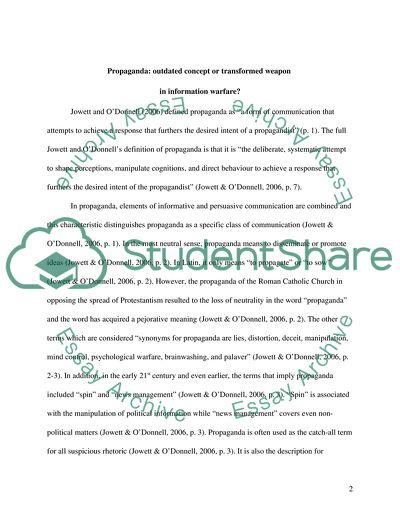Cite this document
(Propaganda as Effective Arms in Information War Research Paper, n.d.)
Propaganda as Effective Arms in Information War Research Paper. Retrieved from https://studentshare.org/information-technology/1737644-propaganda-an-outdated-concept-or-a-transformed-weapon-in-information-warfare
Propaganda as Effective Arms in Information War Research Paper. Retrieved from https://studentshare.org/information-technology/1737644-propaganda-an-outdated-concept-or-a-transformed-weapon-in-information-warfare
(Propaganda As Effective Arms in Information War Research Paper)
Propaganda As Effective Arms in Information War Research Paper. https://studentshare.org/information-technology/1737644-propaganda-an-outdated-concept-or-a-transformed-weapon-in-information-warfare.
Propaganda As Effective Arms in Information War Research Paper. https://studentshare.org/information-technology/1737644-propaganda-an-outdated-concept-or-a-transformed-weapon-in-information-warfare.
“Propaganda As Effective Arms in Information War Research Paper”, n.d. https://studentshare.org/information-technology/1737644-propaganda-an-outdated-concept-or-a-transformed-weapon-in-information-warfare.


